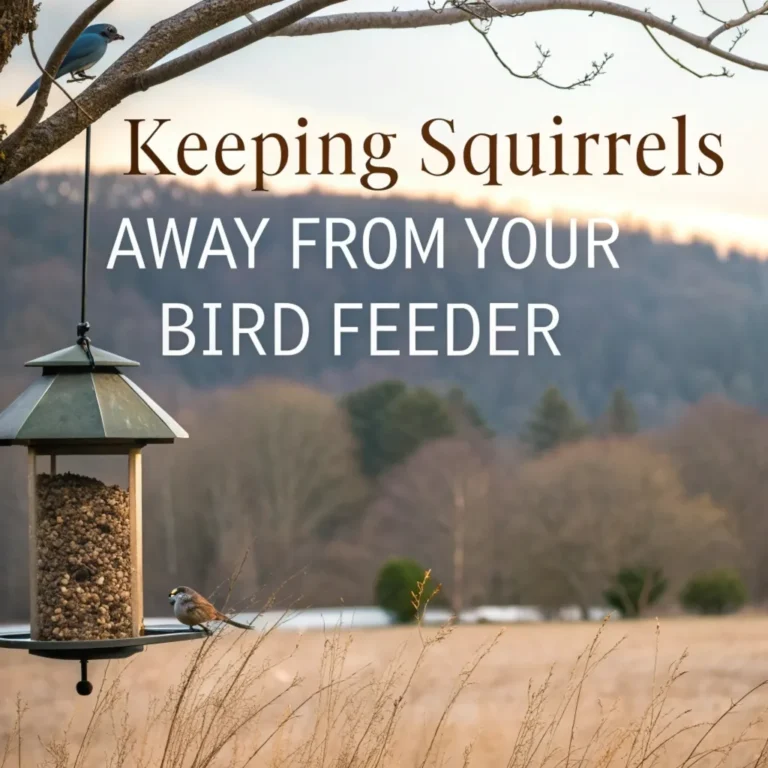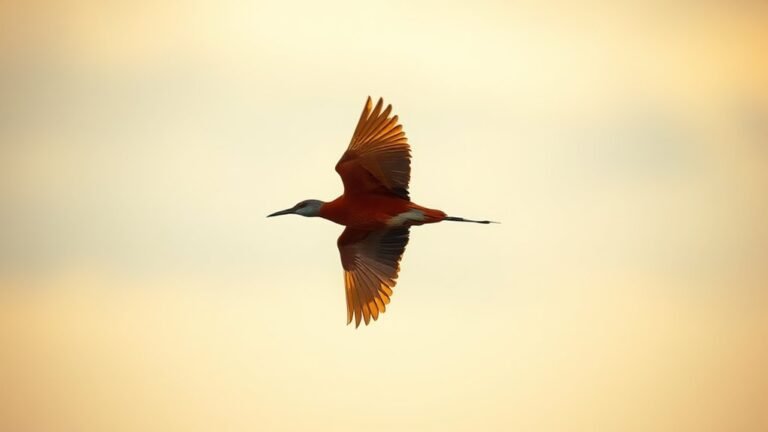Where to Place Bluebird Houses: Expert Tips & Tricks
When placing bluebird houses, consider several important factors that affect their success. Look for open areas with enough food sources nearby. The height at which you install the houses is also important. These details can significantly impact bluebird attraction and nesting success.
To find the best location for your bluebird houses, start by assessing the environment. Choose spots that are away from heavy vegetation and predators. Aim for a height of 4 to 6 feet above the ground. This height helps keep the houses safe and makes them easy for bluebirds to access.
By following these simple guidelines, you can create a welcoming environment for bluebirds and increase the chances of them nesting in your houses. Enjoy the process of attracting these beautiful birds to your space!
Key Takeaways
To place bluebird houses effectively, follow these guidelines:
- Install bluebird houses 4 to 6 feet above the ground. This height helps keep predators away and allows for seasonal adjustments for better airflow and warmth.
- Position the houses 10 to 15 feet from trees and 30 to 50 feet from fences. This distance reduces risks from predators and disturbances.
- Ensure the houses are near open fields and food sources, such as insects and berries. Include natural perches nearby for bluebirds to forage successfully.
- Balance sunlight and shade around the house. This setup helps create a comfortable nesting environment for bluebirds.
- Regularly check on nesting activities. Be ready to move the houses if you notice changes in bird behavior or the environment.
Following these steps will help you create a safe and inviting space for bluebirds. Enjoy watching these beautiful birds thrive in your yard!
Assessing the Environment for Bluebirds

When evaluating the environment for bluebirds, consider their habitat needs.
Bluebirds prefer open areas with low grass and scattered trees. They thrive near fields, parks, and orchards where they can easily find insects to eat.
Provide a mix of perches and open spaces for foraging. Avoid dense shrubbery and heavily forested areas, as these can discourage bluebirds from nesting.
Choosing the Right Height for Bluebird Houses
Choosing the right height for bluebird houses is important for attracting these birds and keeping them safe. Place the houses four to six feet off the ground. This height protects them from ground predators and makes it easy for bluebirds to access the houses.
Consider adjusting the height based on the season. In warmer months, raise the house slightly to improve airflow and prevent overheating.
In colder months, lower the house to shield it from wind. By making these adjustments, you create a welcoming space for bluebirds in your yard.
Ideal Distances From Other Structures

Placing bluebird houses at the right distance from other structures is important. Proper placement helps these beautiful birds thrive.
Here are some key distances to consider:
- 10-15 feet from trees or large shrubs to reduce the risk of predators.
- 30-50 feet away from fences and buildings to limit disturbances from other animals.
- 15-25 feet from homes for a quiet nesting environment.
- 50-100 feet away from other bluebird houses to prevent territorial conflicts.
By following these guidelines, you can create a safe and inviting space for bluebirds.
Enjoy the process of helping these lovely birds!
The Importance of Sunlight and Shade
Sunlight and shade are vital for bluebirds. They influence where bluebirds choose to nest and how well they thrive. Bluebirds prefer areas with plenty of sunlight. Sunlight warms their nesting spots and attracts insects, which are food for their chicks.
However, too much sun can lead to overheating. It's important to find a balance with shade.
Placing a bluebird house near natural shade, like trees or bushes, can help keep the area cool while still allowing for warmth. This balance creates a comfortable home for bluebirds.
When their needs are met, bluebirds are more likely to nest in your yard. This can lead to a lively bird community, making your outdoor space more enjoyable.
Proximity to Open Spaces and Food Sources

Finding the right location for a bluebird house involves more than just sunlight and shade.
Proximity to open spaces and food sources is crucial for attracting bluebirds.
Here are key factors to consider:
- Open fields: Bluebirds prefer open areas with few obstacles. These spaces allow them to fly and find food easily.
- Food sources: Ensure insects and berries are nearby, as these are vital for bluebirds' diets.
- Natural perches: Place trees or tall shrubs close to the house. These provide resting spots for bluebirds to observe their surroundings.
- Water access: Having a pond or stream nearby is beneficial. Bluebirds need water for drinking and bathing.
Avoiding Areas With Heavy Predator Presence
When choosing a location for a bluebird house, avoid areas with many predators. Predators such as cats, snakes, and raccoons can harm bluebirds.
Check the surrounding plants; thick bushes can hide these threats. Look for open areas without dense underbrush to reduce hiding spots for predators.
Consider using predator deterrents, like baffles on poles, to improve safety.
Place your bluebird house at least 100 feet away from nests of larger birds, such as crows or hawks, as they can also be a danger.
Using Natural Cover for Additional Safety
Natural cover is essential for bluebird safety, but it's important to balance shelter with visibility.
Here are some strategies to enhance bluebird habitats with protective foliage:
- Choose native shrubs: These shrubs provide camouflage and attract insects, which serve as food for bluebirds.
- Place near open areas: Position your bluebird house close to spaces where they can easily see predators.
- Ensure clear flight paths: Remove dense vegetation that may block a bluebird's escape route if they face danger.
- Watch for nearby predators: Knowing where natural predators are located can help you position the house away from potential threats.
Establishing a Suitable Entrance Direction
To encourage bluebirds to use your house, position the entrance in a suitable direction.
Ideally, face the entrance toward open areas and the northeast. This direction shields the birds from the afternoon sun and strong winds. It also allows them to see predators easily.
Use a 1.5-inch hole for the entrance. This size lets bluebirds enter comfortably while keeping larger birds out.
Focus on the entrance's orientation and size to create a welcoming space. By paying attention to these details, you increase the chances of bluebirds nesting in your backyard.
Enjoy the connection to nature that comes with it.
Avoiding Excessive Human Activity
Bluebirds need quiet spaces to thrive. Reducing human activity near their nests is very important. Here are some simple ways to help:
- Select a quiet spot: Place bluebird houses in areas with little foot traffic.
- Create no-disturb zones: Set aside spaces where people don't go to protect the nests.
- Limit visits: When checking the houses, spend as little time as possible nearby. This helps keep the birds calm.
- Keep pets away: Make sure pets aren't near nesting areas to avoid disturbances.
Seasonal Considerations for Placement
When choosing locations for bluebird houses, consider seasonal changes.
Bluebirds migrate and have specific nesting habits influenced by the seasons. In spring, place houses in sunny, open areas where bluebirds can find warmth and visibility for foraging.
During fall and winter, add shelters to protect them from cold weather.
Position the houses near natural food sources, such as berry bushes, to attract bluebirds during migration.
Maintaining Accessibility for Bluebirds
To attract and keep bluebirds in your backyard, make sure their houses are easy to access. Here are some simple steps to help you:
- Hang the house 4 to 6 feet above the ground.
- Keep the area around the house clear of thick branches and bushes.
- Check the house regularly to ensure the entrance is clear.
- Avoid placing the house in busy areas.
By following these steps, you'll create a welcoming environment for bluebirds.
Enjoy watching these beautiful birds as they visit your yard!
Monitoring and Adjusting Locations as Needed
To attract bluebirds effectively, monitor their nesting habits and adjust their house locations as needed.
Start by watching their behavior, such as how often they return and their nesting success. Regular observation shows if your efforts succeed or require changes.
If occupancy declines, reconsider the house's location by assessing sunlight, shelter, and food sources nearby. Environments change, and bluebirds may prefer different areas over time.
By tracking these changes, you can improve your chances of attracting them and create a welcoming space.
Don't hesitate to try different locations, as this may lead to more bluebirds enjoying your yard.
Frequently Asked Questions
What Materials Are Best for Bluebird Houses?
When selecting materials for bluebird houses, choose durable wood types like cedar or pine. Use sloped roof designs to ensure water runs off easily. This setup creates a safe and comfortable environment for bluebirds in your yard. Taking these steps will help attract and support bluebirds effectively.
How Can I Entice Bluebirds to Use My House?
To attract bluebirds, provide food they enjoy, such as mealworms. Set up a medium-sized birdbath nearby. This creates a friendly space for them. By doing this, you increase the chance that bluebirds will choose your home.
What Time of Year Should I Install Bluebird Houses?
You should install bluebird houses in early spring. This timing matches their nesting season. Consider local weather and migration patterns when planning your installation. Adjust your schedule for the best results.
Are There Specific Bluebird Species I Should Target?
To attract specific bluebird species, focus on Eastern Bluebirds and Western Bluebirds. Each species has different habitat needs. Knowing their preferences helps create a suitable environment for them. This connection with these colorful birds can enhance your outdoor experience.
How Do I Clean and Maintain Bluebird Houses?
To clean and maintain bluebird houses, create a regular maintenance schedule. Use soap and water to clean the houses. Remove debris and old nesting materials. This keeps the environment healthy for bluebirds and supports your backyard habitat. Regular cleaning helps ensure that bluebirds have a safe place to nest and thrive. Enjoy watching these beautiful birds as they visit your garden!

Ava is a bird enthusiast and nature lover who has spent countless hours observing and learning about the fascinating world of birds. With a passion for sharing her knowledge and inspiring others to appreciate the beauty of birds, Ava writes about her experiences and insights on avianadmirer.com.







